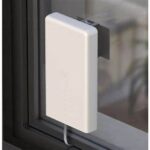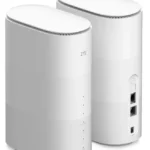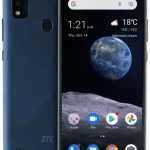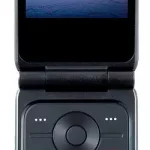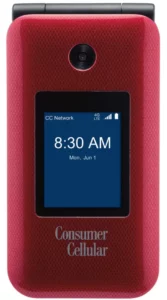

ZTE Z2335CC Link II Flip Phone
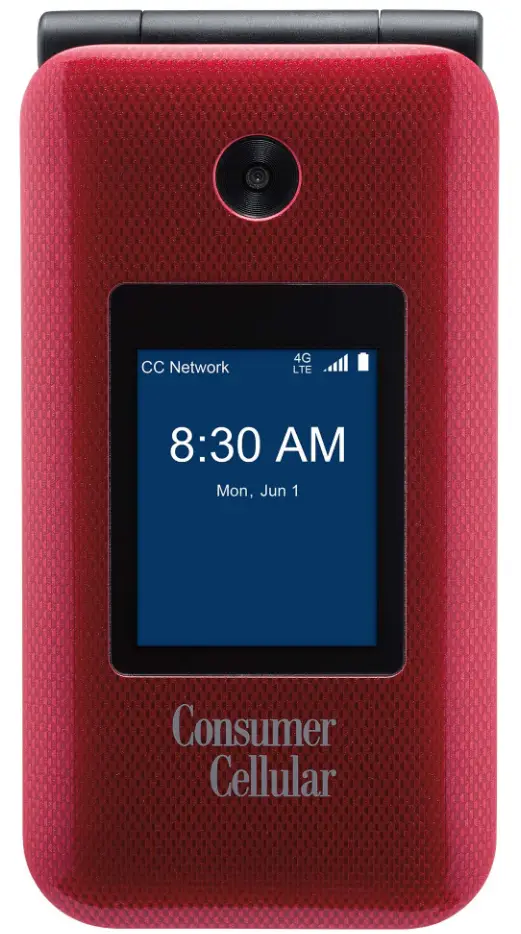
LEGAL INFORMATION
Copyright © 2020 ZTE CORPORATION. All rights reserved.
No part of this publication may be quoted, reproduced, translated, or used in any form or by any means, electronic or mechanical, including photocopying and microfilm, without the prior written permission of ZTE Corporation.
Notice
ZTE Corporation reserves the right to make modifications to print errors or update specifications in this guide without prior notice. We offer self-service for our smart terminal device users. Please visit the ZTE official website (at www.ztedevices.com) for more information on self-service and supported product models. Information on the website takes precedence. Visit https://www.ztedevices.com to download the user manual. Just click Support from the home page and then select the location, product type, and name to search for related support information.
Disclaimer
ZTE Corporation expressly disclaims any liability for faults and damages caused by unauthorized modifications of the software. Images and screenshots used in this guide may differ from the actual product. Content in this guide may differ from the actual product or software.
Trademarks
ZTE and the ZTE logos are trademarks of ZTE Corporation. The Bluetooth® word mark and logos are registered trademarks owned by the Bluetooth SIG, Inc. and any use of such marks by ZTE Corporation is under license. microSDHC Logo is a trademark of SD-3C, LLC. Other trademarks and trade names are those of their respective owners.
- Version No: R1.0
- Edition Time: July 1, 2020
- Manual No: 07958451xxxx
Getting to Know Your Phone
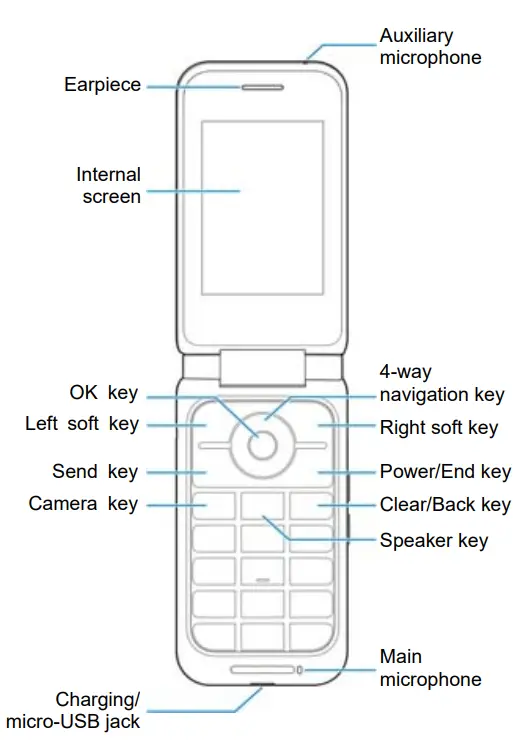
Power off your phone before installing or removing the nano-SIM card, the microSDHC card (optional), or the battery.
WARNING!
To avoid damage to the phone, do not use any other kind of SIM card, or any non-standard nano-SIM card cut from a SIM card. You can get a standard nano-SIM card from your service provider.
- Place your finger in the slot at the lower left of the back cover to lift and remove the cover.

- If the battery is installed already, remove it.
- Hold your nano-SIM card with the metal contacts facing down and slide it into the nano-SIM card slot.
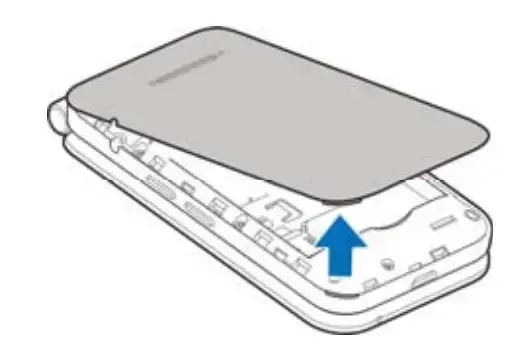
- Hold your microSDHC card with the metal contacts facing down and slide it into the microSDHC card slot
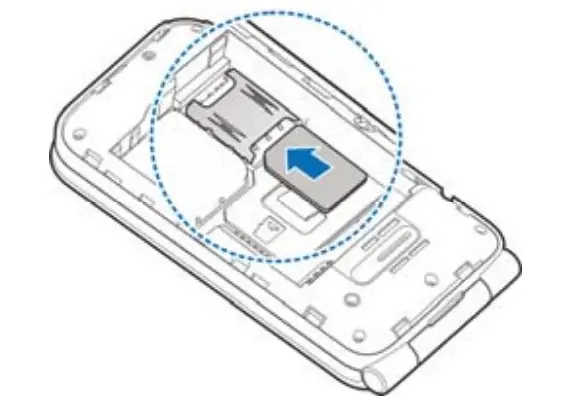
- Insert the battery, making sure the gold contacts line up. Press down gently to secure.
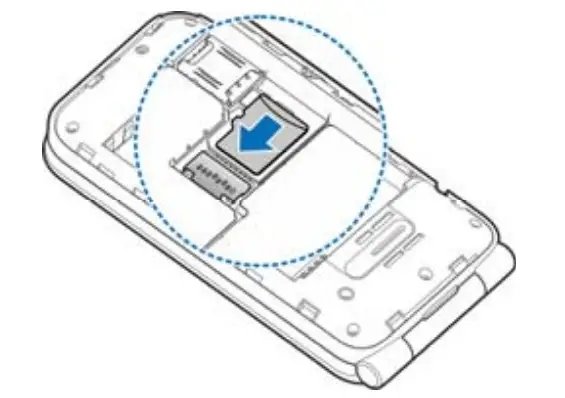
- Replace the cover over the back of the phone, and then press down along the edges to secure. Make sure there are no gaps.
Charging the Phone
Your phone’s battery should have enough power for the phone to turn on, find a signal, and make a few calls. You should fully charge the battery as soon as possible.
WARNING!
Use only ZTE-approved chargers and USB cables. The use of unapproved accessories could damage your phone or cause the battery to explode.
- Connect the adapter to the charging jack. Ensure that the adapter is inserted in the correct direction.
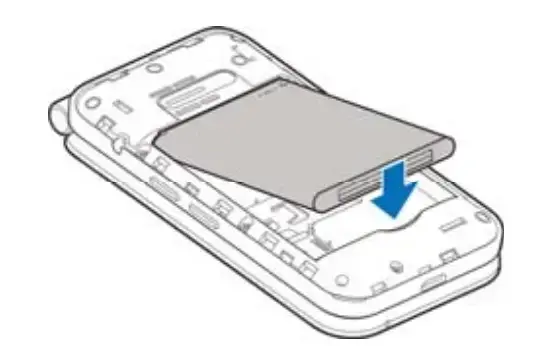
- Connect the charger to a standard AC power outlet.
- Disconnect the charger when the battery is fully charged.
NOTE:
If the battery is extremely low, you may be unable to power on the phone even when it is being charged. In this case, try again after charging the phone for at least 20 minutes. Contact the customer service if you still cannot power on the phone after prolonged charging.
Product Safety Information
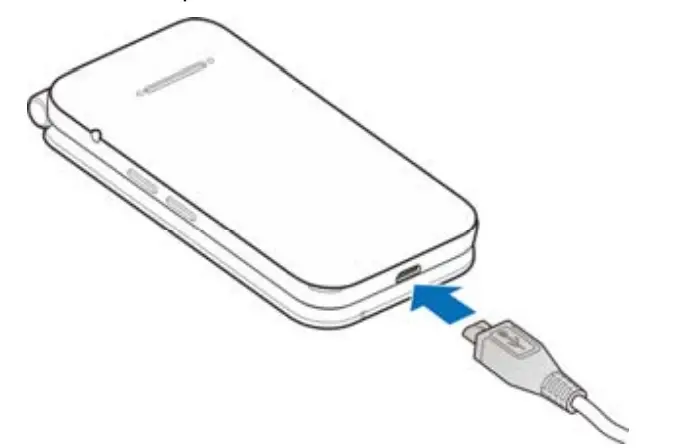
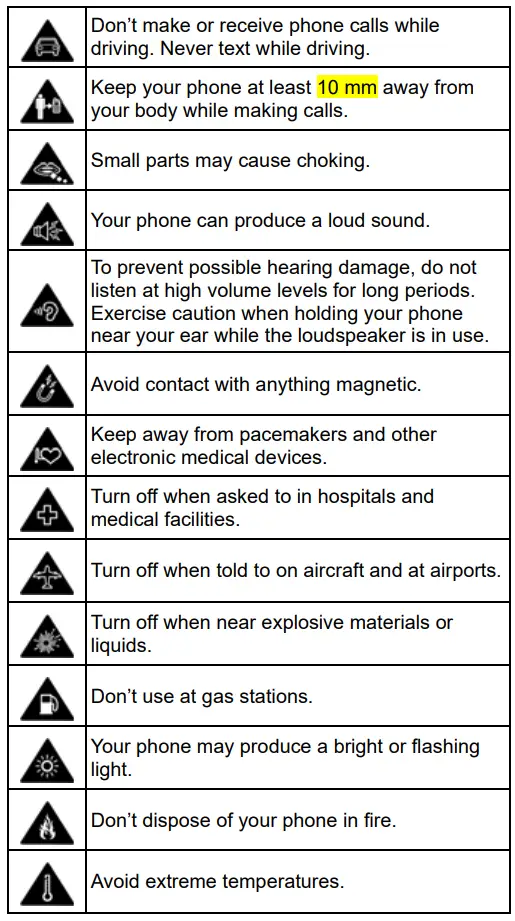
FCC RF Exposure Information (SAR)
This phone is designed and manufactured not to exceed the emission limits for exposure to radio frequency (RF) energy set by the Federal Communications Commission of the United States. During SAR testing, this device was set to transmit at its highest certified power level in all tested frequency bands and placed in positions that simulate RF exposure in usage against the head with no separation, and near the body with the separation of 10 mm. Although the SAR is determined at the highest certified power level, the actual SAR level of the device while operating can be well below the maximum value. This is because the phone is designed to operate at multiple power levels so as to use only the power required to reach the network. In general, the closer you are to a wireless base station antenna, the lower the power output. The exposure standard for wireless devices employing a unit of measurement is known as the Specific Absorption Rate or SAR. The SAR limit set by the FCC is 1.6 W/kg. This device is in compliance with SAR for general population/uncontrolled exposure limits in ANSI/IEEE C95.1-1992 and had been tested in accordance with the measurement methods and procedures specified in IEEE1528. The FCC has granted an Equipment Authorization for this model phone with all reported SAR levels evaluated as in compliance with the FCC RF exposure guidelines. SAR information on this model phone is on file with the FCC and can be found under the Display Grant section of www.fcc.gov/oet/ea/fccid after searching on FCC ID: SRQ-Z2335CC. For this device, the highest reported SAR value for usage against the head is 0.58 W/kg and for usage near the body is 1.28 W/kg. While there may be differences between the SAR levels of various phones and at various positions, they all meet the government requirements. SAR compliance for body-worn operation is based on a separation distance of 10 mm between the unit and the human body. Carry this device at least 10 mm away from your body to ensure the RF exposure level is compliant or lower to the reported level. To support body-worn operation, choose the belt clips or holsters, which do not contain metallic components, to maintain a separation of 10 mm between this device and your body. RF exposure compliance with any body-worn accessory, which contains metal, was not tested and certified, and using such body-worn accessories should be avoided.
FCC Regulations
This device complies with part 15 of the FCC Rules. Operation is subject to the following two conditions:
- This device may not cause harmful interference, and
- this device must accept any interference received, including interference that may cause undesired operation.
This equipment has been tested and found to comply with the limits for a Class B digital device, pursuant to part 15 of the FCC Rules. These limits are designed to provide reasonable protection against harmful interference in a residential installation. This equipment generates, uses, and can radiate radio frequency energy and, if not installed and used in accordance with the instructions, may cause harmful interference to radio communications. However, there is no guarantee that interference will not occur in a particular installation. If this equipment does cause harmful interference to radio or television reception, which can be determined by turning the equipment off and on, the user is encouraged to try to correct the interference by one or more of the following measures:
- Reorient or relocate the receiving antenna.
- Increase the separation between the equipment and receiver.
- Connect the equipment into an outlet on a circuit different from that to which the receiver is connected.
- Consult the dealer or an experienced radio/TV technician for help.
CAUTION:
Changes or modifications not expressly approved by the manufacturer could void the user’s authority to operate the equipment. The antenna(s) used for this transmitter must not be co-located or operating in conjunction with any other antenna or transmitter.
